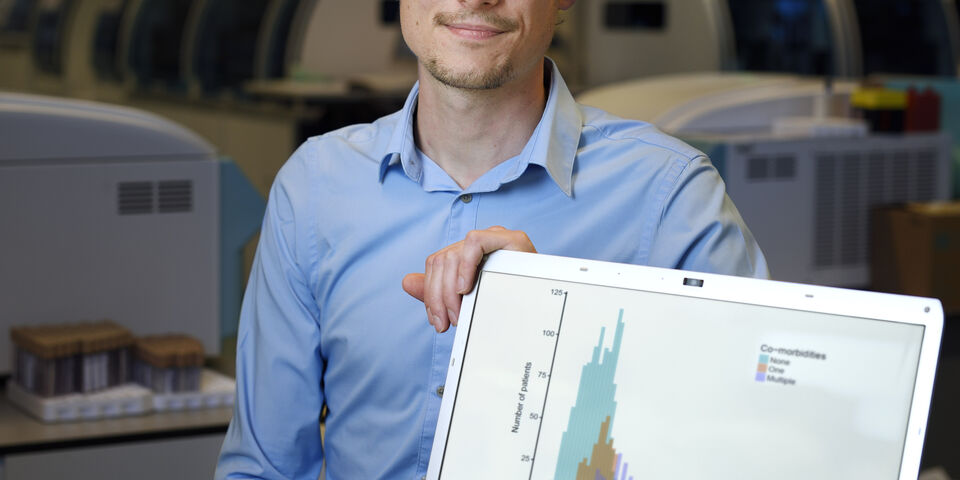Home Stretch | Measure for health
After a gastric reduction, severely overweight patients do not only lose weight fast, gradually they are also affected less by additional disorders such as high blood pressure and cholesterol, diabetes and sleep apnea. Graduating student Ruben Deneer used data from Catharina Hospital to develop the Metabolic Health Index: a measure for the extent to which patients still suffer from these so-called comorbidities.
At the Eindhoven Catharina Hospital some one thousand people per year undergo gastric reduction surgery, because their health is severely impaired by their extreme obesity. Although this is a drastic surgical procedure, Ruben Deneer explains, it does result in a rapid weight loss. “And along with that, related disorders also disappear by the passage of time. It goes without saying that this is good news for patients, but it is also great news for healthcare insurers, who consequently need to reimburse fewer medicines.”
That is why it would be convenient, as the student of Biomedical Engineering explains, to have a number that indicates the extent to which there is still an issue with obesity-related disorders like hypertension and cholesterol, diabetes and sleep apnea – a phenomenon which in the medical world is indicated by the term comorbidities. “For obesity itself there is the familiar BMI, the Body Mass Index, which indicates the ratio between weight and body height. For comorbidity such a measure was not yet available.”
In the Obesity Center of Catharina Hospital they have for several years now been registering some forty reference values for blood of all the patients undergoing surgery there, says Deneer. “Their blood is tested prior to the procedure, and subsequently after set periods after the surgery. This generates a unique dataset, which gives an objective view of the progress of patients’ health.” Not a lot was done with the detailed data, though, he says. Of course, physicians study the results, but so far a large-scale analysis of the data has not been made. “To do so, you need genuine data specialists.”
“I began with an Excel sheet that was totally incomprehensible”
Deneer had learnt during his Master’s program how to deal with complex data sets. For his graduation he combined the database of blood values of Catharina Hospital with a national databank containing the observations of the physicians. “The challenge was to find out which of those forty different blood values say something about the presence of obesity-related disorders. I started with an Excel sheet which I could not make head or tail of, so I first needed to structure that myself. Then, with the assistance of the Statistics department from Mathematics & Computer Science I built a model. You could compare it to a Rubik’s cube: if you just keep turning it cleverly, you will work out a solution in the end.”
The graduate arrived at the conclusion that in addition to patients’ age, it is particularly the HbA1c level (a measure for the average blood sugar over the preceding months), triglycerides (related to cholesterol among other things), the potassium level, and creatinine (indicative of the renal function) that mean something for overweight-related disorders. On the basis of these values he constructed a score between zero and twelve, the equivalent of the BMI for obesity. “My coach dubbed it the MHI, the Metabolic Health Index.”
For the time being, Deneer will not be leaving Catharina Hospital: at present he is doing his external traineeship there and is integrating his model into the hospital system, so that the MHI will show up automatically for physicians. And afterwards there will be a position as PhD candidate in store for him. At a similar project, which will then be in the Cardiology ward. “I know now that I really like to do this work, and I feel very much at home at the Catharina.”


Discussion